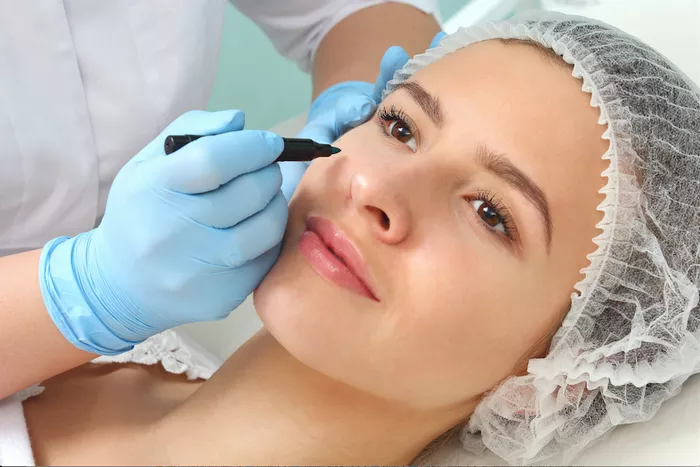Rhinoplasty, commonly known as a nose job, is a surgical procedure that aims to reshape and enhance the appearance of the nose. If you’re considering rhinoplasty or have already scheduled the procedure, you may be wondering about the pain and discomfort involved. It’s important to have a realistic understanding of what to expect in terms of pain during and after the surgery. In this article, we will explore the pain levels associated with a nose job and provide insights into the recovery process.
During the Surgery: Anesthesia and Discomfort
During rhinoplasty, the surgical procedure itself is typically performed under general anesthesia. This means that you will be completely asleep and unaware of the surgery taking place. As a result, you will not experience any pain or discomfort during the actual procedure.
However, it’s worth noting that in some cases, local anesthesia with sedation may be used instead of general anesthesia. This option allows the patient to be awake but relaxed during the surgery. In such cases, the surgeon will administer local anesthesia to numb the area, ensuring that you don’t feel any pain during the procedure. Sedation is also provided to keep you comfortable and relaxed throughout the surgery.
Immediate Post-Surgery: Discomfort and Pain Management
After the surgery, it is common to experience some discomfort and pain as you begin the recovery process. However, the severity of pain can vary from person to person. It’s important to note that while you may experience some level of discomfort, the pain associated with a nose job is generally manageable and can be effectively controlled with proper pain management techniques.
Common experiences during the immediate post-surgery period include:
-
Nasal Congestion and Discomfort
Following rhinoplasty, you may experience nasal congestion and a feeling of stuffiness. This is a normal part of the healing process as your nasal passages adjust to the changes made during the surgery. Nasal congestion can contribute to a sensation of discomfort, but it typically subsides as the swelling decreases and the tissues heal.
-
Soreness and Swelling
Swelling and soreness in the nasal area are common after a nose job. Your nose may feel tender and sensitive to touch, and you may notice visible swelling around the surgical site. Swelling is a natural response of the body to surgery and is a part of the healing process. It gradually subsides over time.
-
Pain Medication
Your surgeon will prescribe appropriate pain medication to manage any discomfort you may experience. It is essential to follow the prescribed dosage and instructions to ensure optimal pain relief. Pain medication can help alleviate any post-surgical pain and improve your overall comfort during the initial recovery period.
-
Bleeding and Drainage
Some patients may experience minor bleeding or drainage from the nose following rhinoplasty. This is normal and can be managed with nasal packing or absorbent dressings. Your surgeon will provide instructions on how to handle any bleeding or drainage and will guide you on when to contact them if there are concerns.
-
Fatigue and Limited Activities
It’s important to remember that your body needs time to heal and recover after a nose job. You may experience fatigue and feel tired during the initial days or weeks following the surgery. It is advisable to limit physical activities and take ample rest to aid the healing process.
Recovery Period: Gradual Improvement
As you progress through the recovery period, you will notice a gradual improvement in your comfort levels. The initial discomfort and pain will gradually subside as the tissues heal and the swelling decreases. The specific duration of the recovery period can vary depending on the extent of the surgery and individual healing patterns.
Here are some general guidelines for the recovery timeline:
-
First Few Days
The first few days after the surgery are typically the most uncomfortable. It’s important to rest, follow your surgeon’s instructions, and take prescribed pain medication as directed. Using cold compresses on your face can help reduce swelling and alleviate discomfort.
-
First Week
During the first week, you may still experience some discomfort, but it should gradually improve. Swelling and bruising may be more noticeable during this time. It is important to continue following your surgeon’s post-operative care instructions, which may include wearing a splint or nasal packing.
-
First Month
By the end of the first month, most of the initial discomfort should have subsided. Swelling will continue to decrease, and you will begin to see the initial results of the rhinoplasty. However, it’s important to note that complete healing and final results can take several months or longer.
-
Long-Term Recovery
Over the following months, the remaining swelling will gradually resolve, and your nose will continue to refine its shape. It’s important to avoid activities that could potentially impact the healing process, such as strenuous exercise or contact sports, as advised by your surgeon. Be patient and allow your body sufficient time to heal fully.
Open Communication and Follow-Up Care
During your recovery, it is crucial to maintain open communication with your surgeon. They will provide you with specific post-operative care instructions, including guidance on managing pain, cleaning the surgical site, and any other concerns you may have. They will also schedule follow-up appointments to monitor your progress and address any questions or issues that arise during the recovery process.
Conclusion
While discomfort and pain are common after a nose job, the severity of these sensations can vary from person to person. The surgical procedure itself is performed under anesthesia, ensuring that you do not experience any pain during the surgery. The immediate post-surgery period may involve some discomfort, which can be managed with pain medication and proper care. As the recovery progresses, the discomfort gradually subsides, and you will experience an improvement in your comfort levels. Remember to follow your surgeon’s post-operative care instructions and maintain open communication with them throughout the recovery process. With time, patience, and proper care, you can achieve the desired results of your rhinoplasty procedure.

